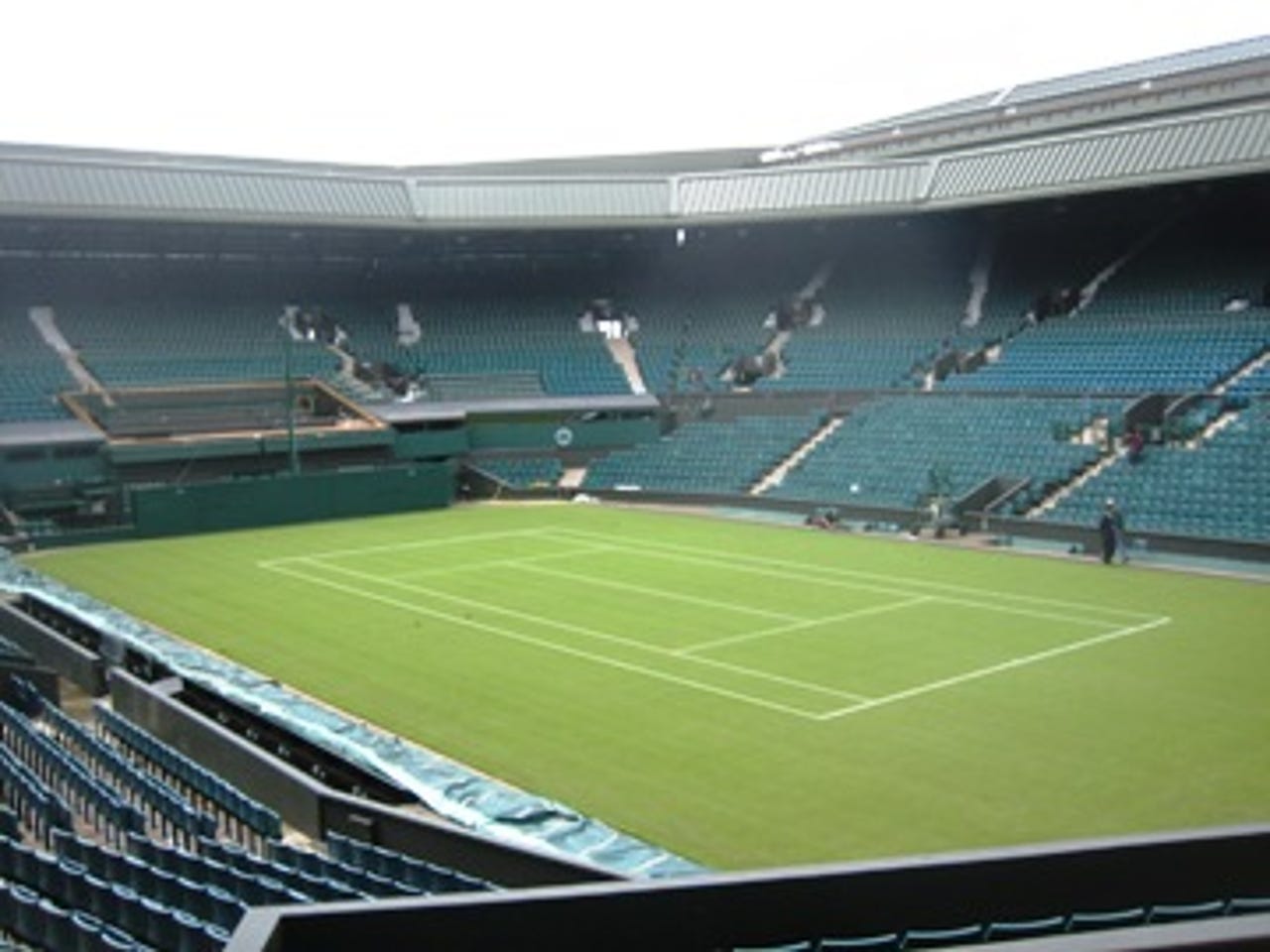Photos: Wimbledon on target for a tech ace


Behind the scenes at the world's top tennis tournament...
Centre Court at Wimbledon's All England Lawn Tennis Club (AELTC) looks pristine ahead of the two-week grand slam tournament which begins on Monday.
The club's IT department, headed by CIO Jeff Lucas and AELTC's official technology partner IBM, have been working hard to get the tech ready in the run up to the tournament.
silicon.com went down to the club in south west London to have a behind the scenes look at the technology that keeps the championship running smoothly.
Photo credit: Tim Ferguson
New for 2008 are these LED scoreboards (in the centre of this photo) which also show player stats and profiles, can replay shots and show the Hawk-Eye radar system when players query a line call.
The data shown on these screens is gathered and managed by IBM and is one of the most visible signs of the huge amount of IT work going on under the covers.
AELTC CIO, Jeff Lucas, told silicon.com the tech is being used before the full tournament even starts with data being gathered during the qualifying tournament this week. The systems were all tested earlier in the spring before being effectively locked for the tournament.
Lucas said: "It's all to do with supporting the tournament overall and the information around it. It's basically an integration project."
Photo credit: Tim Ferguson
The club uses these handheld devices to register staff and visitors who enter and leave the club during the tournament.
With six to 10,000 temporary staff working at the club during the fortnight, it's important to keep track of whether they are on site or not. There will be around 250,000 badge scans during the course of the tournament.
The devices are also used when people return show court tickets. Once they've been scanned out, seats for Centre Court or Number One Court can be offered to other visitors for £5. All proceeds from these returned tickets go to charity.
Jeff Lucas said the tech team and IBM focus on three areas during the tournament: the referee's office, data capture and TV graphics and general support for systems such as accreditation and transport logistics.
Photo credit: Tim Ferguson
These screens are in the IBM operations room located underneath the press centre. They show the various graphics used by broadcasters for each match. They show preview graphics as well as what broadcasters are putting out at the time.
Photo credit: Tim Ferguson
This shows the match data which is used by commentators and updates the Wimbledon website with live scores. Figures, such as the number of aces or the average serve speeds, are also collated.
Lucas said the main challenge during the tournament is keeping all the systems ticking over. He said: "Once we've got going, it really is a question of people keeping their concentration."
Photo credit: Tim Ferguson
During the tournament the Wimbledon website sees a huge surge in traffic so IBM brings in additional servers to meet demand. In 2007, the site registered 8.6 million unique users during the two weeks, an 83 per cent increase on 2006.
An innovation on the website for 2008 is the SlamTracker application which allows users to follow the progress of their favourite player through the draw and provides an interactive map to show what's happening on different courts at any given time.
This is one of the servers used by the IBM team in the applications centre.
Photo credit: Tim Ferguson
IBM also works with the other Grand Slam tennis tournaments (the Australian Open, French Open and US Open) and has to transport its servers between tournaments.
This flight case contains one of the servers brought over from the Roland Garros venue in Paris where the French Open finished on 8 June.
Photo credit: Tim Ferguson
This is an IBM application, which shows how much server capacity the Wimbledon website is using. Although low at the moment, the dials will show the servers running close to capacity during the tournament.
Photo credit: Tim Ferguson
This keyboard is used to input data from individual matches. On the show courts (Centre Court and Number One Court) one person watches while another inputs the score and identifies how the point was won.
For example, the score could be 15-30 with the winning shot a forehand volley at the net.
This data is then fed into the IBM system and sent to the broadcasters and the website for real-time scoring.
Photo credit: Tim Ferguson
These headphones and microphones allow the tech team in the operations room to communicate directly with staff on court to solve any problems which may arise around the collating and transmitting of match data back to the team.
Photo credit: Tim Ferguson